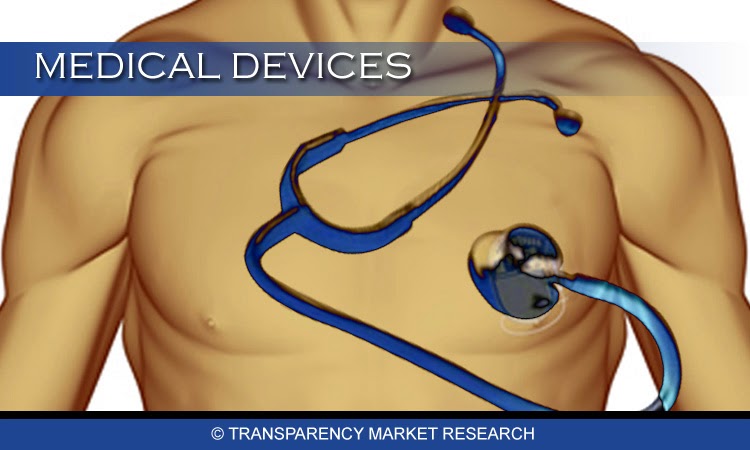According to a new market report published by Transparency Market Research “Hospital Acquired Disease Testing Market(Pneumonia, UTI, Blood Stream, Surgical Site, MRSA Infection, and Others) – Global Industry Analysis, Size, Share, Growth, Trends and Forecast, 2013 – 2019”, the global hospital acquired disease testing market was valued at USD 2.2 billionin 2012 and is expected to grow at a CAGR of 19.3% from 2013 to 2019, to reach an estimated value of USD 7.5 billion in 2019.
Browse the full Hospital Acquired Disease Testing Market Report at http://www.transparencymarketresearch.com/hospital-acquired-disease-testing.html
Nosocomial infections/hospital acquired diseases/hospital associated infections (HAI)form one of the critical areas of focus in the healthcare industry. Factors such as increasing prevalence of such conditions in neonatal and geriatric population, initiatives taken up by governments to manage nosocomial infections, increasing number of diseases that increases risk of hospital associated infections, and growing concerns about control and prevention of nosocomial infections worldwide will have a positive impact on the current hospital acquired disease testing industry.
The global hospital acquired disease testing market is segmented on the basis of type of infection and geography. Based on the different types of infection,this market is classified into pneumonia, urinary tract infection, blood stream infection, surgical site associated infection, MRSA infection testing and others.
The hospital acquired urinary tract infection diagnostics segment occupies the largest market share in this category as prevalence and morbidity rate of this condition, and the demand for diagnostic solutions for the same is the highest as compared to other hospital associated infections. It is expected that the global market for hospital associated urinary tract infection testing will reach USD 2,188.8 million in 2019 with the market growing at CAGR of 18.1%from 2013 to 2019. Furthermore, other testing solutions for conditions such as surgical site infections and pneumonia (hospital associated and ventilator associated infections) will also experience high demand in lesser developed regions of Asia-Pacific, Latin America and other developing countries where the prevalence of such conditions is higher. It is expected that the market for surgical site infections will grow at a CAGR of 20.1%during the given period of forecast.
Geographically, United States and Canada together are the leaders in the global hospital acquired disease testing market with a combined market share (of the North American region) of 41.3% in 2012. Some of the major growth drivers for the North American nosocomial infection testing market include existence of highly developed healthcare infrastructure, high rate of implementation of healthcare guidelines given by regulatory and guiding institutions such as Centers for Disease Control and Prevention (U.S.), and increasing awareness about these diseases and their prevention.
The European Union considers infectious diseases as an increasing threat to the general public health; the public health system in this region is increasingly engaging itself in conducting dialogue between healthcare providers and medical practitioners for developing better, faster and cost effective methods for nosocomial infection management and prevention. Asian countries including China, Philippines and India are the most potential markets for such diagnostic and testing solutions owing to existence of factors such as higher population, poor hospital infrastructure, lack of adherence to sanitation procedures and thereforehigher disease prevalence growth rates. UAE and African countries are some of the lucrative markets in the Rest of the World (RoW).
Molecular diagnostics solutions play a vital role in this market as they offer precise, faster and cost effective diagnosis for various nosocomial infections. Considering the market competition, the global hospital acquired infection testing market is highly fragmented and is characterized by the existence of several large and mid-sized diagnostic solution providers. Some of the key market players contributing to this industry include Diatherix Laboratories Inc., Gen-Probe Inc., Qiagen GmbH, L Hoffman La Roche,Cepheid, Inc.,Life Technologies Corporation, Meridian Biosciences, Cantel Medical Corporation, Nordion, Inc. and others.
The global hospital acquired disease testing market is segmented as follows:
Hospital Acquired Disease Testing Market, by Infection Type
§ Pneumonia infection
§ Urinary tract infection
§ Blood stream associated infection
§ Surgical site infection
§ MRSA infection
§ Others
Hospital Acquired Disease Testing Market, by Geography
§ North America
§ Europe
§ Asia-Pacific
§ Rest of the World
Get Sample Copy of Hospital Acquired Disease Testing Market @ http://www.transparencymarketresearch.com/sample/sample.php?flag=S&rep_id=1759
About Us
Transparency Market Research is a global market intelligence company, providing global business information reports and services. Our exclusive blend of quantitative forecasting and trends analysis provides forward-looking insight for thousands of decision makers. Our experienced team of Analysts, Researchers, and Consultants, use proprietary data sources and various tools and techniques to gather, and analyze information.
Our data repository is continuously updated and revised by a team of research experts, so that it always reflects the latest trends and information. With a broad research and analysis capability, Transparency Market Research employs rigorous primary and secondary research techniques in developing distinctive data sets and research material for business reports.
Contact
Ms. Sheela AK
90 Sate Street, Suite 700
Albany, NY 12207
Tel: +1-518-618-1030
USA - Canada Toll Free: 866-552-3453
Email: sales@transparencymarketresearch.com
Website: http://www.transparencymarketresearch.com/

No comments:
Post a Comment